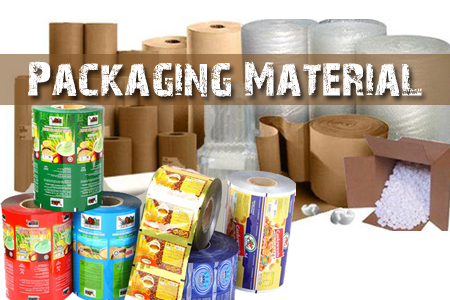Packaging Material
Published: Oct 17, 2022
Packaging plays a crucial role in protecting and presenting products, as well as creating a memorable brand experience for customers. Behind every successful packaging lies an intricate process of manufacturing and production. In this article, we will explore the key aspects of manufacturing packaging materials, focusing on the importance of quality, efficiency, and meeting industry standards.

Understanding Packaging Material Types
Packaging materials come in various forms, each suited for specific product requirements and industry needs. Common packaging materials include cardboard boxes, plastic containers, glass bottles, metal cans, and flexible packaging materials like pouches or films. Manufacturers must have a deep understanding of different material properties, such as strength, durability, flexibility, and barrier properties, to choose the most suitable material for the product and its intended use.
Types of Manufacturing Packaging Material
- Plastic Packaging
- Paper & Paperboard
- Flexible Packaging Materials
- Metal Packaging
- Glass Packaging
- Foil Packaging
- Textile & Fabric Packaging
- Biodegradable & Compostable Materials
Polyethylene (PE), Polypropylene (PP), Polyethylene Terephthalate (PET), Polyvinyl Chloride (PVC), Polystyrene (PS)
Used for: bottles, containers, pouches, shrink wraps, and more.
Kraft paper, Corrugated cardboard, Carton board
Used for: boxes, cartons, wrapping, and eco-friendly packaging.
Laminated films (PET/PE, PET/AL/PE, etc.),Foils and plastic composites, Stand-up pouches, roll stock, sachets
Aluminum, Tinplate
Used for: cans, foils, aerosol containers.
Amber or clear glass
Used for: food jars, beverage bottles, pharmaceuticals.
Aluminum foil, laminated foil
Used for: insulation, food wraps, and pharmaceutical blister packs.
Woven and non-woven polypropylene bags, Jute and cotton bags
PLA (Polylactic Acid), Cellulose-based films, Starch-based polymers
Used for: sustainable and eco-conscious packaging solutions
Design and Prototyping
Before commencing the manufacturing process, thorough design and prototyping are essential. Packaging design should not only be visually appealing but also functional and efficient. Designers consider factors such as product dimensions, weight, fragility, and branding elements to create packaging that enhances product protection, promotes ease of use, and aligns with the brand image. Prototyping allows for testing and fine-tuning the design before mass production, ensuring optimal performance and customer satisfaction
Material Sourcing and Quality Control
Manufacturers must source high-quality raw materials for packaging production. Partnering with reliable suppliers who provide materials that meet industry standards is crucial. Quality control processes should be in place to verify the materials' integrity, such as conducting inspections, testing for durability and safety, and adhering to regulatory requirements. Maintaining strict quality control ensures that the packaging materials meet the desired specifications and provide the necessary protection for the products.

Manufacturing Techniques and Equipment
Manufacturing packaging materials involves employing various techniques and utilizing specialized equipment. Common manufacturing processes include extrusion, injection molding, blow molding, thermoforming, and printing. These techniques enable the creation of packaging materials in different shapes, sizes, and designs. Manufacturers invest in modern machinery and technology to streamline production, increase efficiency, and ensure consistent quality throughout the manufacturing process.
Sustainability and Environmental Considerations
In recent years, the focus on sustainable packaging has grown significantly. Manufacturers are adopting eco-friendly practices to reduce the environmental impact of packaging production. This includes using recyclable or biodegradable materials, optimizing material usage, minimizing waste generation, and implementing energy-efficient processes. Incorporating sustainable practices not only benefits the environment but also aligns with consumer preferences and brand values.
Regulatory Compliance and Safety
Manufacturers must adhere to regulatory standards and safety requirements when manufacturing packaging materials. This includes ensuring the materials are safe for contact with food or other sensitive products, meeting labeling and packaging regulations, and complying with industry-specific guidelines. Regular audits and testing are conducted to verify compliance and maintain the highest levels of safety and consumer confidence.
Continuous Improvement and Innovation
To stay competitive in the packaging industry, manufacturers must continuously strive for improvement and innovation. This involves monitoring industry trends, embracing technological advancements, and exploring new materials or manufacturing techniques. Collaborating with customers, suppliers, and industry experts can lead to insights and ideas that drive innovation, enhance product performance, and provide unique packaging solutions.
Manufacturing packaging materials requires expertise, attention to detail, and a commitment to quality. By focusing on material selection, design, quality control, sustainability, regulatory compliance, and continuous improvement, manufacturers can deliver packaging that meets the highest standards while addressing the evolving needs of the market.
you may also like : Exclusive Graphic Design Agency Delhi | Effective Exhibition Design Service Delhi | Digital Marketing Strategies | Interior Design for Retail Environments | Unique Corporate Gifts